The rather wonderfully named and looking topknot pigeon is native to Australia.
It is named for its swept-back crest that gives the bird’s head a unique shape.
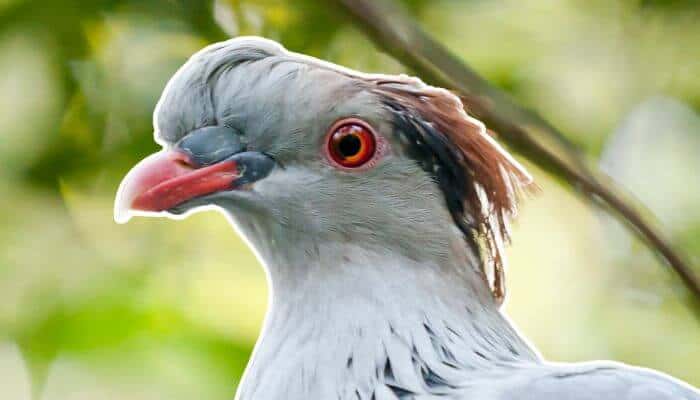
Origins of the Topknot Pigeon
Scientific name Lopholaimus antarticus, the topknot pigeon is one of 20 pigeon species native to Australia.
It was first categorized by English naturalist George Shaw in 1973 when he described the pigeon as Columba Antarctica.
The topknot pigeon is one of the closest relatives to a lineage that eventually gave rise to the iconic mountain pigeons of New Guinea.
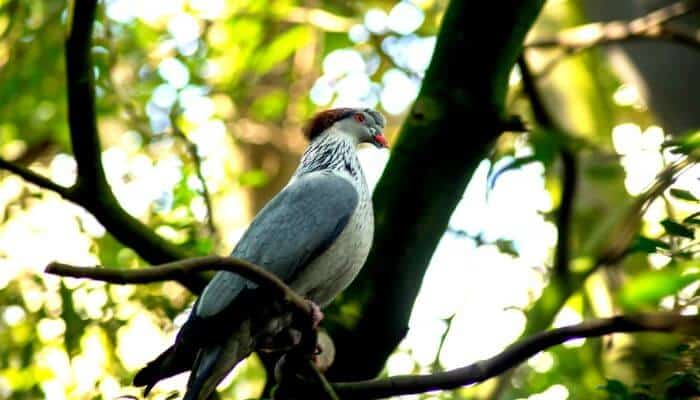
In turn, this is the common ancestor of diverged lineages that produced both the New Zealand Kereru pigeon and the Chatham pigeon.
Distribution And Habitat of the Topknot Pigeon
The topknot pigeon can be found from the Cape York Peninsula in Queensland all the way to the central south coast of New South Wales.
A migratory and seasonal bird, the topknot is known for covering huge distances in search of trees that bear fruit.
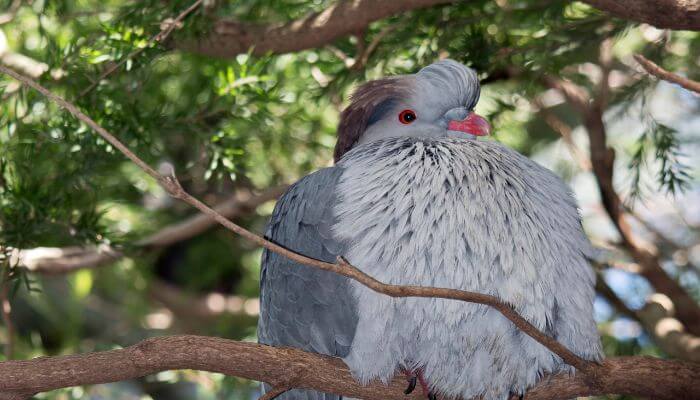
As part of this pursuit, they will even occasionally move further than their usual boundaries, into parts of eastern Victoria.
A historic record from 1953 lists the topknot pigeon as being an ‘accidental’ species found in Tasmania when a specimen was taken at Spreyton near Davenport.
In terms of habitat, topknot pigeons prefer to live in rainforests, nearby wet forests and woodlands, and in particular along moist sheltered gullies.
Topknot Pigeon Conservation Status
Currently, the topknot pigeon is currently listed as being of ‘Least Concern’ on the official IUCN Red List
The topknot pigeon can be found in huge numbers in the Australian rainforest, but there has been a slight decline in population due to factors like shooting and forest clearance.
To try to prevent these still large but slightly smaller numbers from becoming something to worry about, the topknot pigeon was made a protected species in Australia.
In better news, the ever-increasing presence of a new food source for the topknot, the fruit of the ‘weed’ camphor laurel tree, has seen somewhat of a resurgence in their numbers in recent years.
Appearance of the Topknot Pigeon
| Wingspan | Length | Length | Coloring | |
|---|---|---|---|---|
| Topknot Pigeon | 75+ cm | 40 – 46 cm | 650+ g | Shades of grey, black and white with orange/red nape |
| Average Feral Pigeon | 64 – 72 cm | 32 – 37 cm | 300 – 500 g | Bluish grey with some black |
The topknot is a large, grey pigeon that is most notable for its striking swept-back crest which is grey at the front and a rusty red color at the back.
This gives the bird a really unique overall head shape.
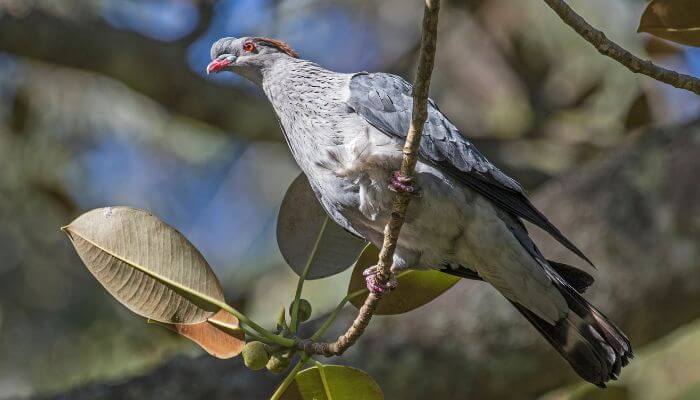
Its body is a darker grey high up which gets lighter the further down the body you look.
The wings are dark grey and rounded, and there is a pale tail band that goes across what is otherwise a black tail.
The topknot’s eyes and bill are both red, and the females have a paler, smaller crest than the males.
Young topknot pigeons of both sexes resemble females, and they have a more mottled appearance with a slightly browner head and smaller crest.
Topknot Pigeon Character
Topknot pigeons are arboreal birds and are strong fliers.
They live in large flocks, often numbering in the hundreds.
The topknot has four distinct calls:
Coo-oo ee – is related to nesting
Coo-oo oo is louder but still soft in nature
Cor or is quiet and croaky, almost guttural – the closest sound it makes to that of the wood/feral pigeon.
There is also a short raucous call made during flocking and feeding which has been described as sounding like a domestic pig or a flying fox (a type of bat).
As well as their vocalizations, topknot pigeons are also known for the beating and whistling sound their wings make when they take off.
Diet of the Topknot Pigeon
Topknot pigeons are frugivores, eating mostly fruits from ficus (native fig) and other rainforest trees such as lillypillies, bangalow palms and blueberry ash.
The migratory patterns of the bird roughly follow the ripening of fruits at different times throughout the year in different parts of the bird’s range.
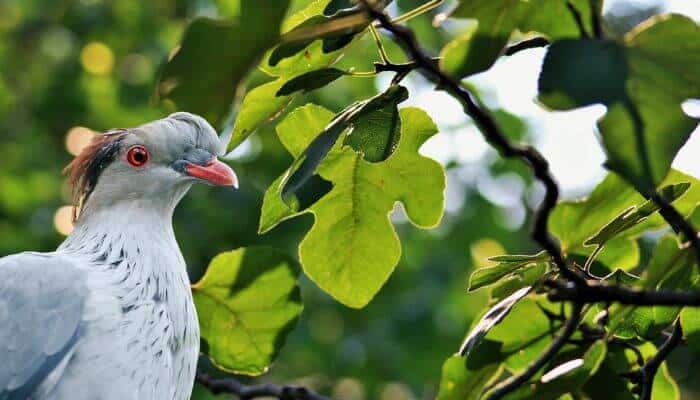
As a wholly frugivore bird, the topknot is different to other granivorous pigeons in that it doesn’t use grit to grind down its food.
To reach the most succulent fruits that they can find, they will often carry out acrobatic moves to hang upside down and feast on hard to get fruits in trees.
They are very rarely seen in large urban and suburban areas, but on occasion, you might discover them foraging on the outskirts of towns if there are fruits available.
Topknot Pigeon Mating and Breeding
Topknot pigeons form monogamous breeding pairs following a really elaborate courting ritual that involves lots of bowing and parading.
Males will also fly very high over a canopy in order to attract the attention of a female.
In so much as the fruiting season of their food trees dictates the migratory patterns, it also has a say in the topknot pigeon’s breeding season.
When groups of trees are in fruit, the pigeons flock together in large numbers enabling more couples to form.
Nesting pairs are quite elusive and hard to observe but it is known their preferred breeding time is between July and January.
They build nests made from twigs of eucalyptus and turpentine in the crowns of trees, anywhere from 2 to 12 meters above the ground.
One egg is laid which is incubated for 17-24 days.
As with most pigeons, both parents share incubation duties and the feeding of crop milk after the chick has hatched.
Care Of Topknot Pigeons
As a protected bird, the topknot pigeon is not one you would keep as a pet.
If you happen to be in the rainforests of eastern Australia, keep your eyes peeled and you are almost certain to discover one or two!
